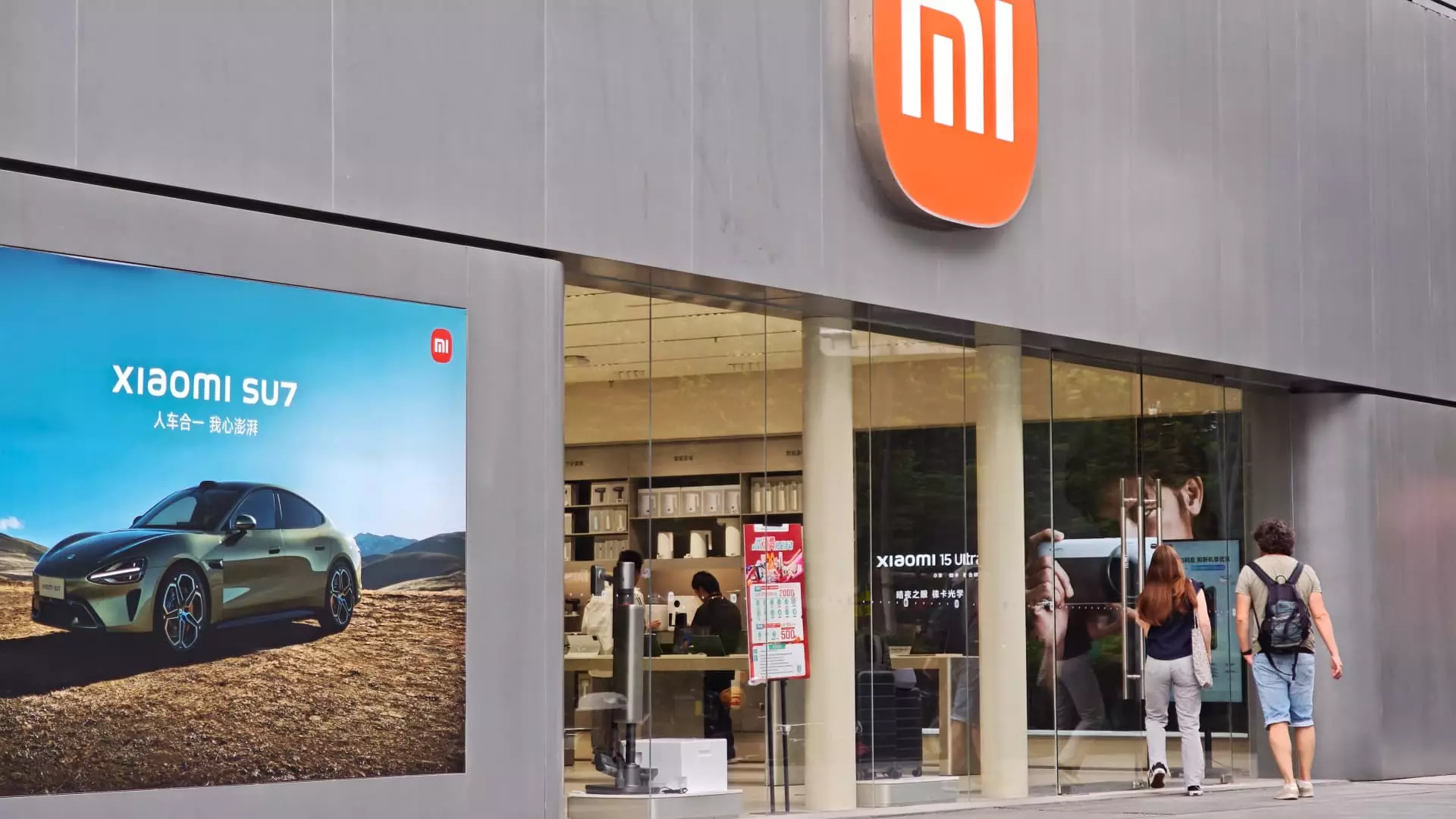In a year overshadowed by economic uncertainties and global supply chain issues, the Hong Kong-listed Xiaomi has emerged as a powerhouse in the smartphone market, reporting record net profits for two consecutive quarters. While it’s easy to dismiss Xiaomi’s achievements by comparing its earnings to Apple’s, the narrative surrounding these two tech titans is more nuanced. Xiaomi’s growth trajectory hints at a significant market shift that many analysts are underestimating. The company’s ability to penetrate the high-end smartphone segment while simultaneously diversifying its product line holds unique implications for its future.
Recent reports indicate that Xiaomi’s earnings, which reached an impressive 10.68 billion yuan (around $1.48 billion), have surpassed analysts’ predictions. While it may only command a fraction of Apple’s profit margins, this ambitious Chinese company has managed to carve out a larger market share in its home country. The increasing competition between these two giants is invigorating and merits a closer evaluation, particularly when juxtaposed with Apple’s recent struggles, such as its controversial handling of overseas supply chains in the wake of regulatory pressures.
Electrifying Opportunities: The Future of Mobility
What truly sets Xiaomi apart is its bold venture into the electric vehicle (EV) market, an area where Apple has, surprisingly, faltered. With the company unveiling its latest SUV model, the YU7, analysts are buzzing with optimism about its potential impact on sales and market positioning. The YU7 is not just any vehicle; it aims to outshine established competitors like Tesla, particularly the Model Y, by promising an extended driving range and enhanced features.
If successful, this launch could do wonders for Xiaomi’s revenues and margins, providing a much-needed catalyst to drive higher average selling prices (ASPs) across its product lines. The electric vehicle sector is witnessing an exponential rise in consumer interest, and Xiaomi’s foray into this domain reflects its adaptability to shifting market dynamics. In many ways, investing in the YU7 could prove to be a double-edged sword for investors—balancing risks and rewards, but the longer-term prospects could significantly elevate Xiaomi’s brand stature and profitability.
AIoT: The Engine of Growth
Beyond smartphones and cars, Xiaomi has been making significant strides in its AIoT (Artificial Intelligence of Things) division, integrating smart technologies into everyday appliances. This innovative approach has attracted attention and increased its market cap by providing consumers with seamless connectivity across devices. The expected revenue boost from AIoT is forecasted to amplify business growth, underscoring the fact that Xiaomi is not merely a smartphone manufacturer but a holistic tech ecosystem.
Analysts from Jefferies have already recognized this trend, raising their price target on Xiaomi shares significantly. Their positive outlook hinges on the noticeable uptick in consumer preference for AI-powered home devices, which seamlessly blend with an ever-increasing digital lifestyle. As more and more consumers adopt smart appliances, Xiaomi stands poised to dominate a market that’s expected to grow exponentially over the next few years.
However, the challenge lies in maintaining a balance between hardware innovation and service expansion. While Xiaomi’s hardware offerings have historically driven its revenue, developing a robust services division—similar to what Apple has achieved—remains a crucial goal. The path to achieving this will be complex and demands careful navigation.
A Head-to-Head with Apple’s Legacy
While it’s tempting to put Apple in the throne of tech royalty, the burgeoning success of Xiaomi raises vital questions about traditional hierarchies in tech. Apple has had its fair share of roadblocks lately, including a 20% drop in share price due to the onerous demands from the Trump administration and increasing market competition. This loss might not seem catastrophic, but for a giant like Apple, it does indicate a widening chasm between its past and present performance.
Apple’s strategy has been heavily reliant on maintaining premium pricing and legacy product lines, which now face formidable challenges from aggressive players like Xiaomi. The allure of cutting-edge technology does not just lie in price points but also in evolutionary ecosystems, and here lies a chink in Apple’s armor. Xiaomi’s ability to innovate while keeping costs manageable could prove crucial as consumer preferences pivot toward value-driven technology.
Ultimately, in what appears to be a new chapter for the tech industry, Xiaomi seems to increasingly have the upper hand. Its comprehensive strategy, commitment to electric mobility, and expansion into AIoT could redefine market categories, and while Apple’s brand remains iconic, the landscape is evolving—much to the chagrin of traditionalists. For investors, this shifting tide could hold incredible opportunities; the question is whether they’ll embrace the unconventional journey that Xiaomi represents.

